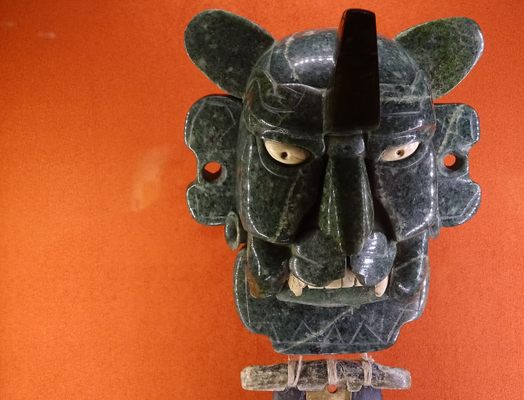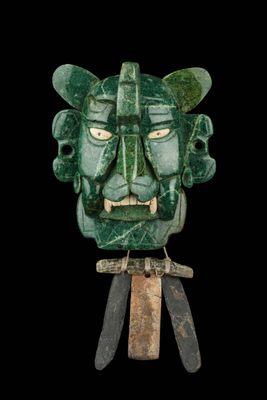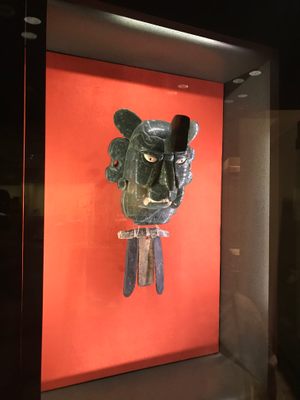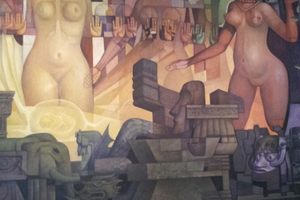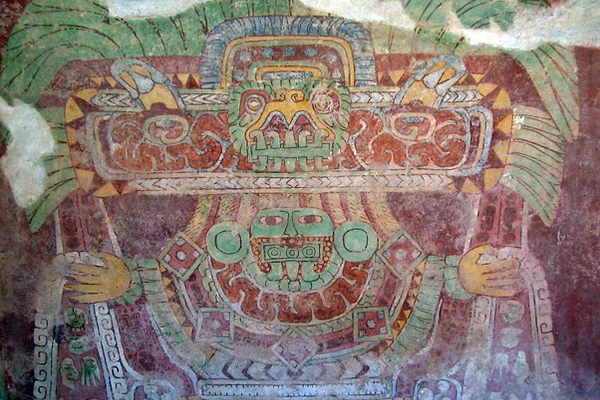About
This strange and sinister jade mask was discovered by archeologists excavating a tomb in the ruins of the ancient city of Monte Alban, once the heart of the powerful Zapotec civilization. Although some scholarly disagreement remains as to what purpose this mask served, it is overwhelmingly acknowledged that it portrays a bat.
It's believed the mask was created between 100 BC and 200 AD at the height of Monte Alban's dominance of the region. It's made out of 25 pieces of jade, a green stone highly valued to Mesoamerican civilizations, with yellow, piercing eyes made from shell fragments. Now on display at the National Museum of Anthropology in Mexico City, it is known as the mask of the Zapotec bat god.
Bats were highly symbolic to the Zapotec civilization and in the wider Mesoamerican cosmovision for a number of reasons. Due to the winged animal's habitat in caves, tombs, temples, and tree roots, the Zapotec bat god was related to the sacred world of the dead and the spirit ancestors that roamed the underworld.
The nocturnal behavior of these animals strengthed this significance, as nightfall was symbolic of death and spirits. But there is another, even more chilling symbolism that bats held to the ancient Zapotec people. The vampire bat is a species native to most regions of Mexico and is particularly common in Oaxaca where it feeds on the blood of mammals, including that of human beings. Due to the sanguinary diet of this animal, it became associated with the rites of bloodletting and human sacrifice that were practiced to honor the gods and secure bountiful harvests of the maize crop that fed the civilization.
The long, upward pointing snout characteristic of the bats of the Americas, known as a "nose-leaf," indicates that the mysterious mask found at Monte Alban likely portrays a hybrid of the vampire bat and one of the many insect-eating species that are found in the region. In a strange case of mythology mirroring reality, insectivorous bats do in fact help ensure the success of maize harvests even to this day in the region, by preying on the numerous insect pests that plague crops and can cause famine.
It is likely that the crucial role in the ecosystem these winged helpers played was not lost on the ancient peoples of Mesoamerica, who were keen observers of the natural world that surrounded them and upon which they relied for survival.
Related Tags
Know Before You Go
You can find the mask in the Oaxaca hall of the National Museum of Anthropology (Museo Nacional de Antropologia) in Chapultepec Park, along with many more batty artifacts. Be sure to check the excellent display on the floor upstairs, which has exhibits on the Zapotec peoples of contemporary Mexico and their incredible folk art and traditions. The museum is open from 9 a.m. to 7 p.m. every day except Thursdays, when it is closed to the public. The entrance fee is 51 pesos but if you are a Mexican national or a foreign resident of the country you may enter for free on Sundays.
Yucatan: Astronomy, Pyramids & Mayan Legends
Mayan legends, ancient craters, lost cities, and stunning constellations.
Book NowCommunity Contributors
Added By
Published
February 22, 2019
